After selecting a fabric for your client’s project and requesting a quote from your custom drapery workroom, has your workroom ever asked you “Is the fabric railroaded?” Your answer might be “What is a railroaded fabric?” That’s OK! Today we’re going to cover the ins and outs of pattern direction and fabric width when specifying fabric for your custom home furnishings.
Up The Bolt pattern direction
Most 54” wide fabric that is intended for draperies has the pattern direction running UP THE BOLT. To better picture 54″ wide fabric, think of a bolt of fabric like a roll of toilet paper. As you unroll the toilet paper (i.e. the bolt), the direction of the pattern goes up the roll. This allows the fabric to be unrolled from the bolt, cut to length and fabricated into draperies, valances, or pillows.
Railroaded pattern direction
But what does the pattern look like when it is RAILROADED? Here, the direction of the pattern goes from side to side (selvedge to selvedge)
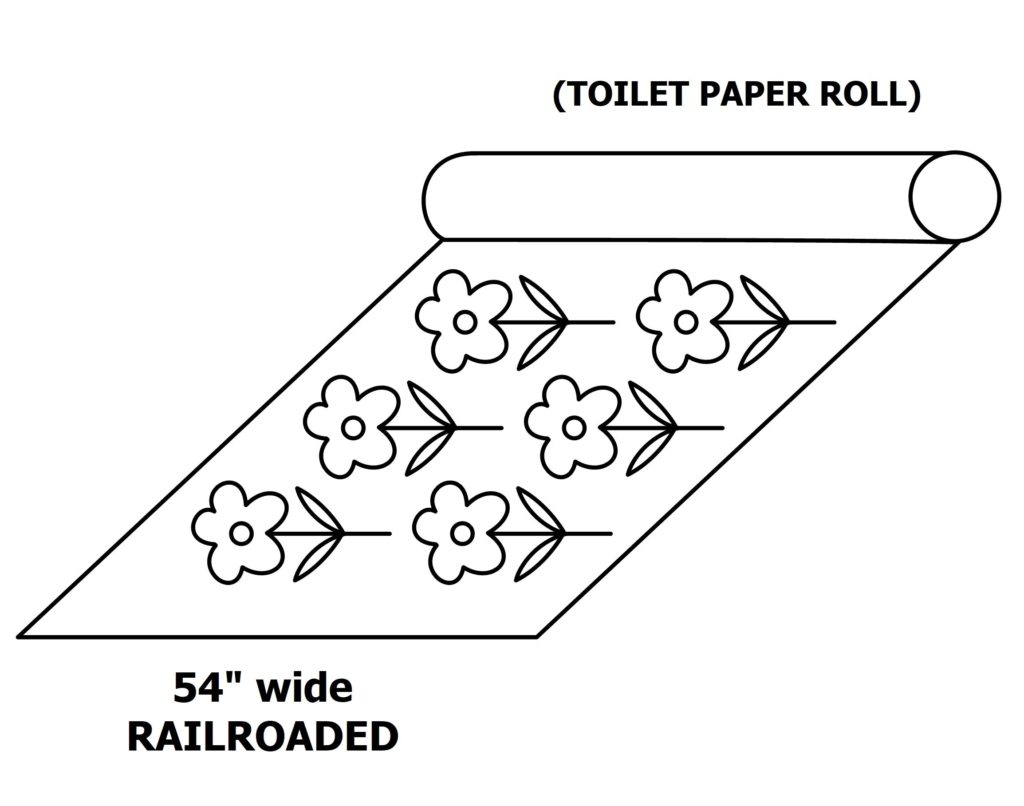
You may be thinking “why would I want a railroaded fabric?” The most common use for 54” wide railroaded fabric is in upholstery. The railroaded pattern makes it possible to upholster a large piece of furniture like a sofa without seaming the fabric (which may add bulk or create a break in the pattern). In a drapery workroom, 54” wide railroaded fabric is used for headboards, wide cushions, and cornices. The advantages of no seaming are perfect for these applications.
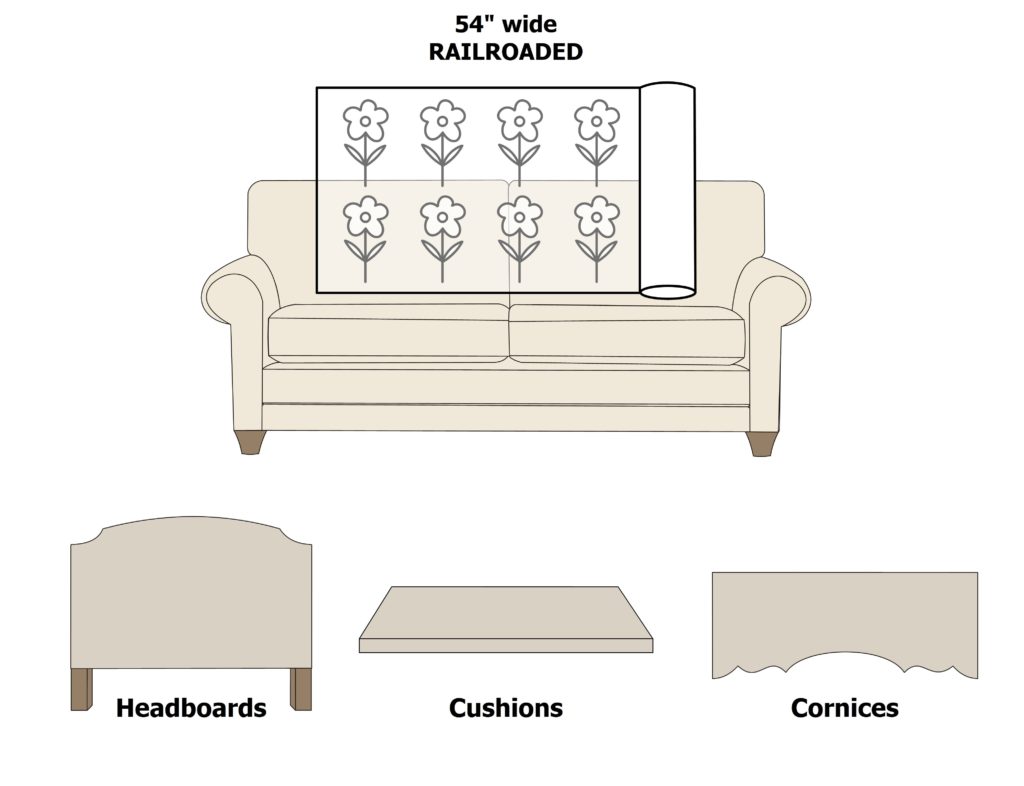
What happens when a 54” wide railroaded fabric is chosen for a drapery application. The short answer is to re-select. Often the 54” wide railroaded fabric is heavy and stiff (perfect for its intended use in upholstery). These qualities make for a drapery panel that may not hang in nice folds and cause flaring at the bottom. It is not impossible, though, and we have had jobs where we made the railroaded fabric work. In cases where there is a definite up direction to the pattern, there will be a horizontal seam in the panel. Blackout lining would be used to prevent the shadow of the seam from showing. Other options to disguise the horizontal seam are the addition of trim or the additional of a second fabric to add color blocking to the design. For a non-directional pattern (like a geometric or a textured solid) that is meant to be railroaded, we would make fewer pleats with more fabric in each pleat and add weighted tapes to the hems to control the potential flaring.
Stripes
Stripes belong in a category all their own. You always need to check the pattern direction when selecting a stripe. Some 54” wide stripes come up the bolt and are intended for drapery panels with vertical stripes. Some 54” wide stripes come railroaded and are intended for drapery panels with horizontal stripes. Both are a great option but you don’t want a surprise on installation day. It is always best practice to use the fabric as it was intended to achieve the best end result.
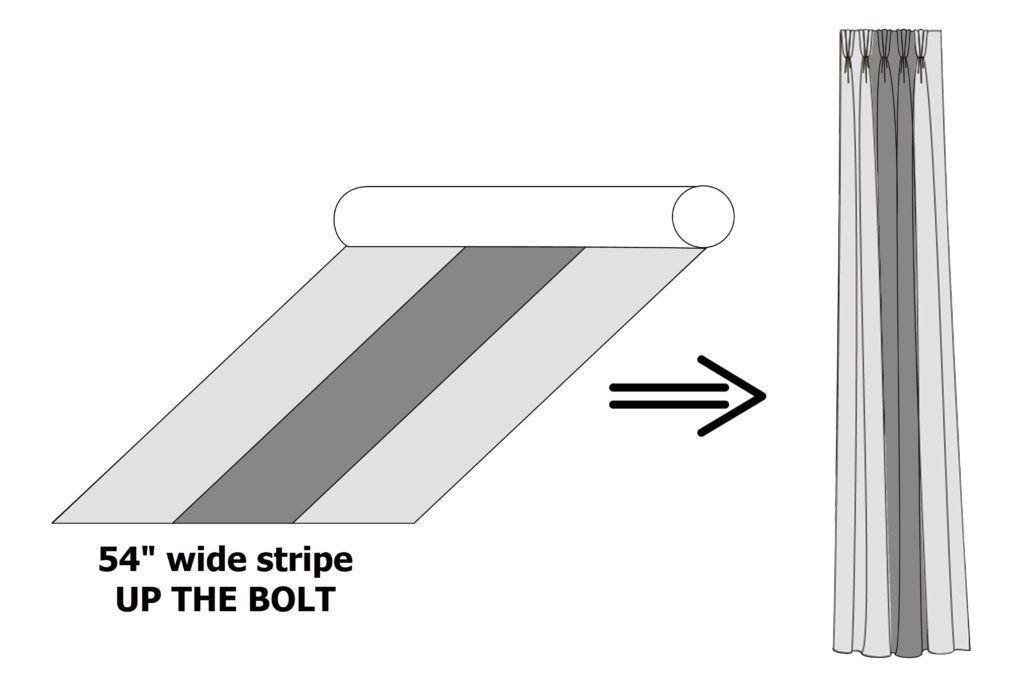
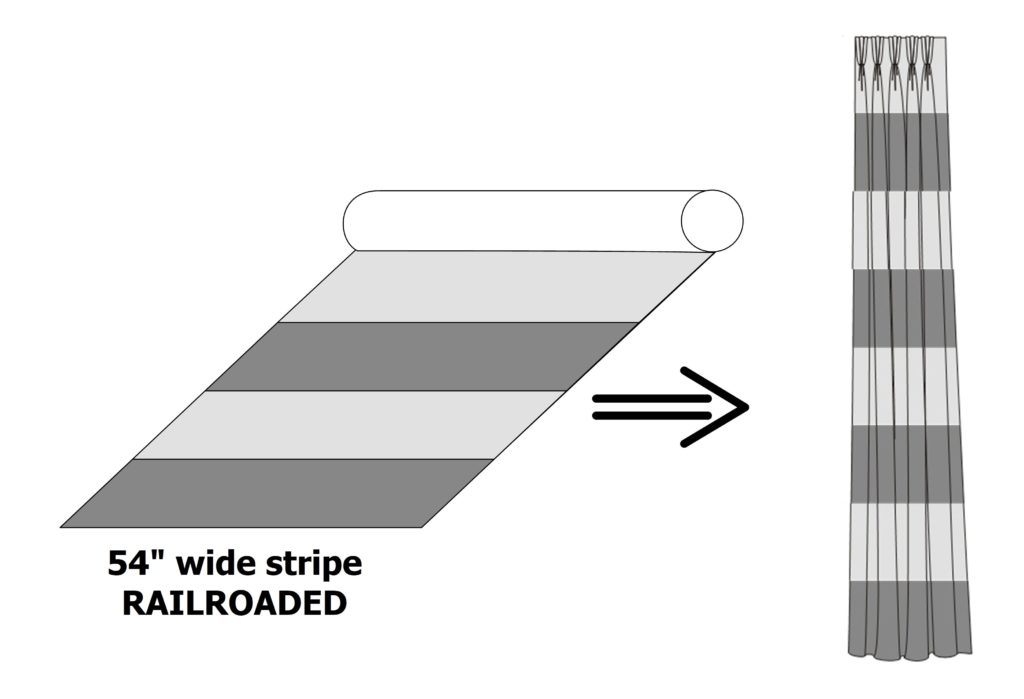
118″ Wide Fabric
We have been focusing on 54” wide fabrics. However, there is another category of railroaded fabric that is intended for draperies – 118” wide fabric. Sheers are the most common category of 118” wide fabric. Using our paper goods analogy, think of a 118” wide sheer as a roll of paper towels and again our 54″ wide fabric as a roll of toilet paper. 118” wide sheers are always railroaded – that is the direction of the pattern goes from side to side (selvedge to selvedge). The real advantage of 118” fabrics is in wide drapery applications. You can make the sheer drapery panel as wide as you want without seaming.

Consider a one way draw sheer for a sliding glass door. Using a 54” wide sheer, you would have to roll out 4 cuts from the “toilet paper” roll, seam the cuts together and finish the drapery panel. Using a 118” wide sheer, you have to unroll one cut of 6 continuous yards from the “paper towel” roll and finish the drapery panel — no seams!
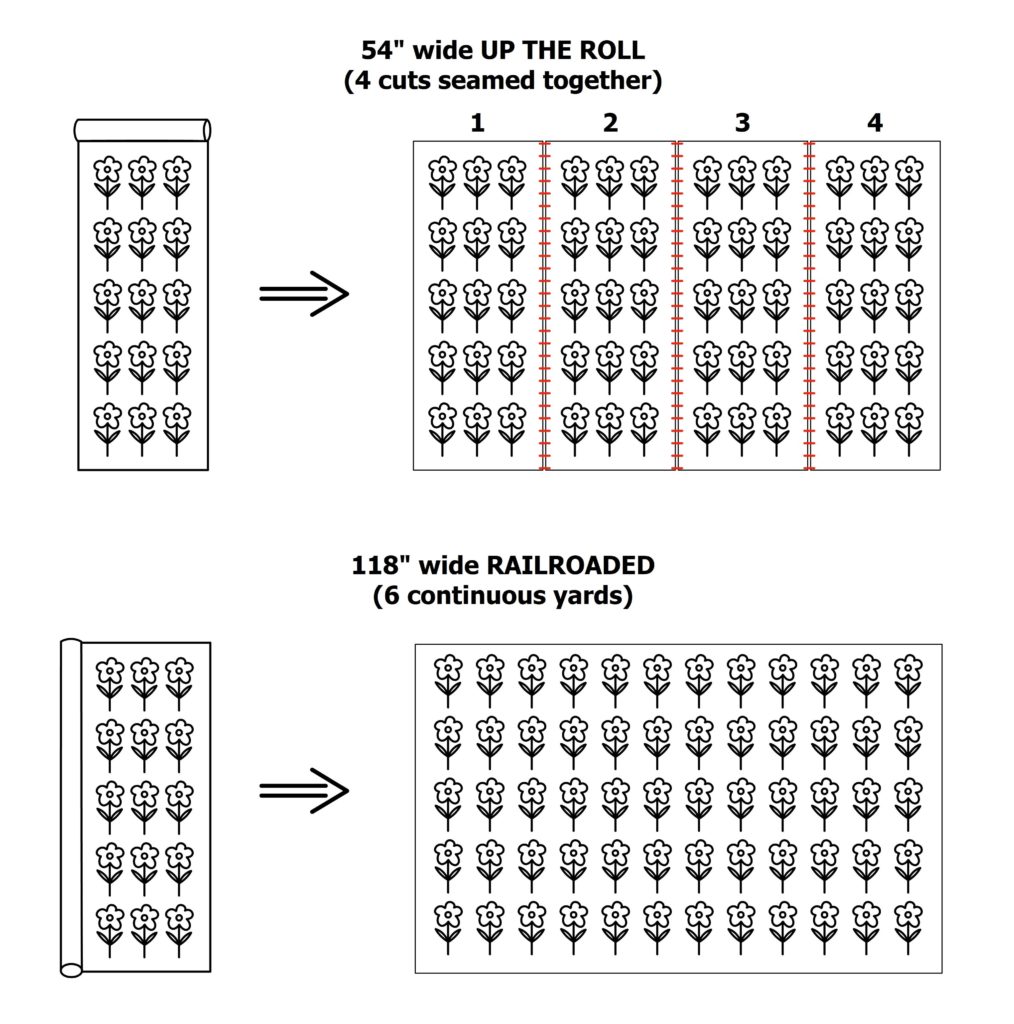
Up the bolt and railroaded fabrics, 54″ wide and 118″ wide fabrics all have a place in custom home furnishings. As the designer selecting fabrics for your clients’ projects, you can now confidently specify the right pattern direction and fabric width for the job. But know that we are here to consult, advise, and answer any questions that may arise. Our fabrication expertise and attention to detail are what truly sets up apart. Contact us to get started on your next project.

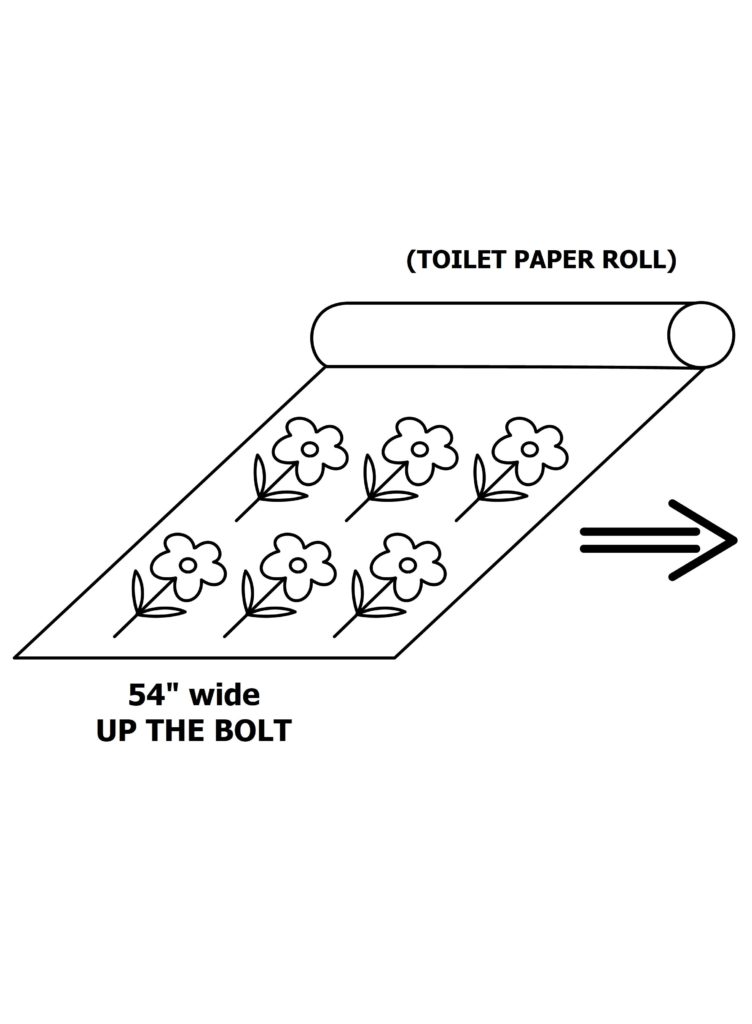
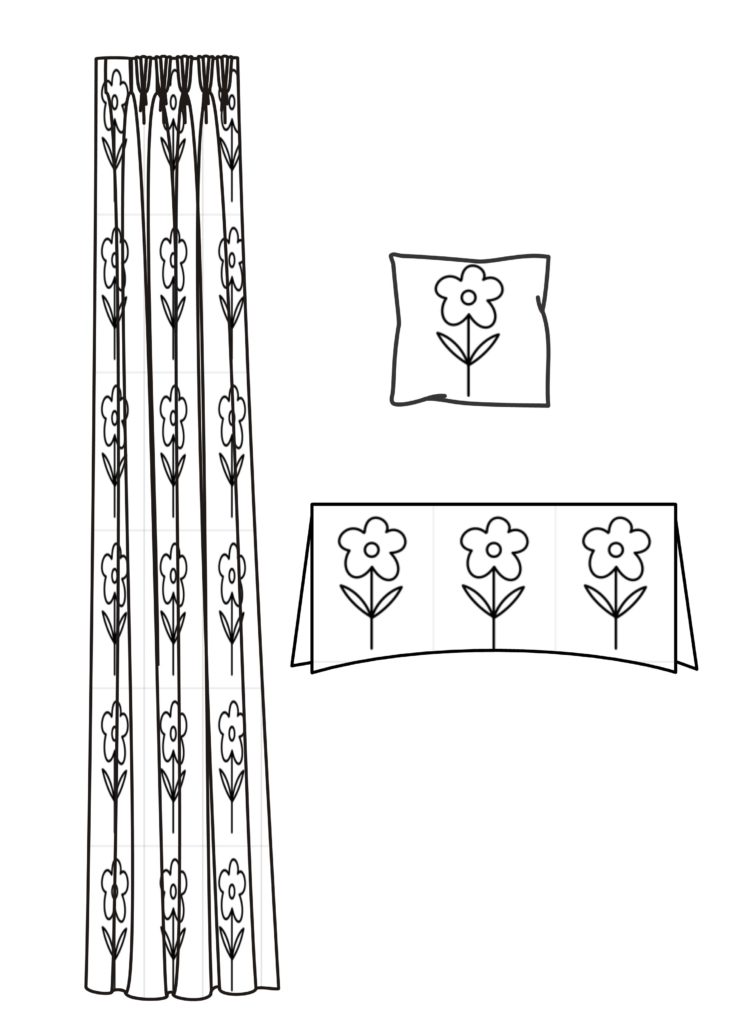
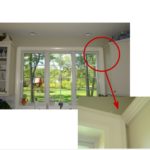

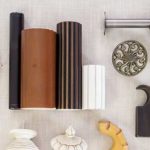
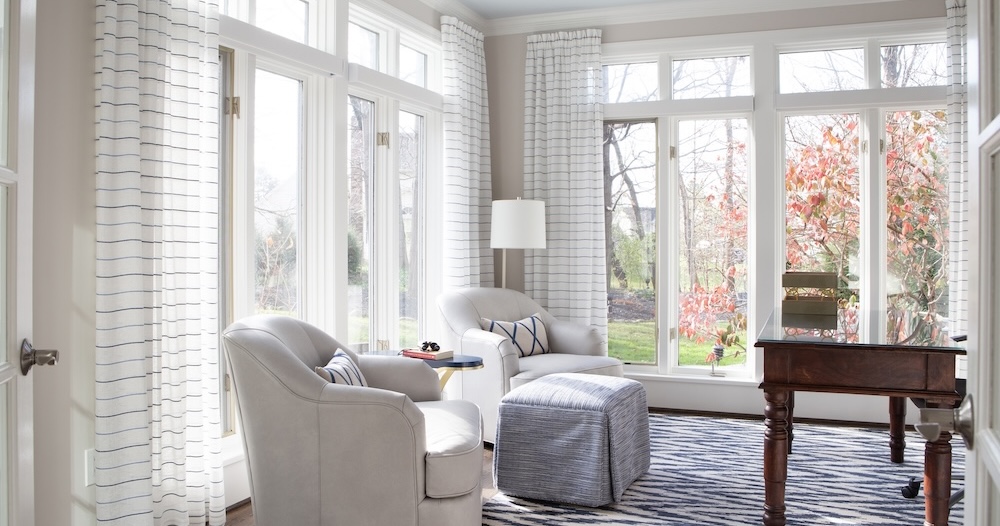

Bonnie
| 3 April 2023Yours is the 5th website I have found describing the difference between “up the bolt” and “railroaded” stripes, and the 1st one to get it right. Thank you for a superb job and pictures!